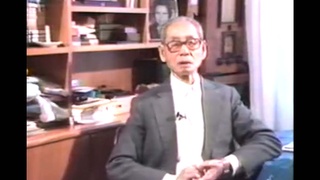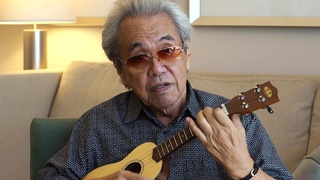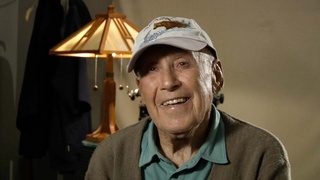Interviews
522nd and Dachau
And sometimes, you’d see a pile of snow and there’s somebody dead underneath the…you know. That’s…the concentration camp. [Clears throat.] And I know that one of the guys said that, that um, he heard a noise. And their group, someone sent…taken down into a valley, and are being been shot. And he had…he was so tired, he was just been lyin’ down. And so, uh, the Germans had to leave because we were moving pretty fast on them. So they left and he was alive, yeah. And, but he was covered up with snow. Which kept him warm all night. And then he heard a noise next morning and he woke up and he saw a truck. It was one of our guys. And the truck was on a hill. And the guy got out, he said, and he saw him walking toward him. And as he walked toward him, he said he thought he was gonna be shot again. And, uh, but he said the guy reached into his pocket and pulled out a candy bar. And gave to him. He said the first time a soldier had ever given him a candy bar to eat. And it was the full four…the 522nd artillery battalion of the 442nd.
Date: February 12, 2013
Location: California, US
Interviewer: Duncan Williams
Contributed by: Watase Media Arts Center, Japanese American National Museum with support of NITTO Tires Life History Project. Courtesy of the USC Hapa Japan Database Project.
Explore More Videos

442nd’s contribution to redress
(1919 - 2006) World War II and Korean War veteran


Makegumi - Movement to regognize the defeat of Japan (Japanese)
A central figure for the “Makegumi” (defeatists)

Strictly American, but sympathize with Japan
(1919-2020) Member of the 1800th Engineering Battalion. Promoted Japan-U.S. trade while working for Honda's export division.

Father's Service in WWII
(b. 1930) Half Japanese and grew up in both Japan and the United States.

Moving to Upland Post-Camp
(b. 1930) Half Japanese and grew up in both Japan and the United States.

Kindergarten in Davao, Philippines
(b. 1938) Philipines-born hikiagesha who later migrated to the United States.

Family was shipped back to Japan after the war
(b. 1938) Philipines-born hikiagesha who later migrated to the United States.


Coming to California
(1916 - 2013) Member of the U.S. Military Intelligence Service

Life in the Philippines
(b. 1938) Philipines-born hikiagesha who later migrated to the United States.

Learning Japanese with the MIS
(1916 - 2013) Member of the U.S. Military Intelligence Service

Camouflage Net Weaving in Manzanar
Japanese American animator for Walt Disney and Hanna Barbera (1925-2007)

Miscommunications
(1916 - 2013) Member of the U.S. Military Intelligence Service

Writing Letters
(1916 - 2013) Member of the U.S. Military Intelligence Service
